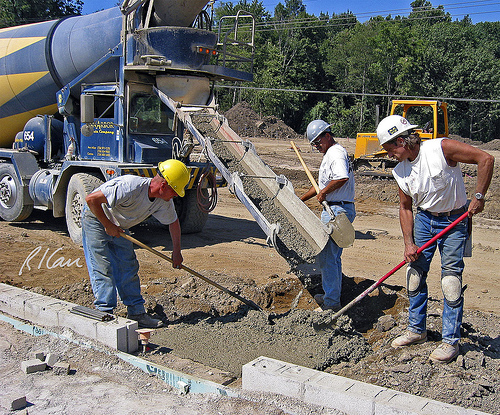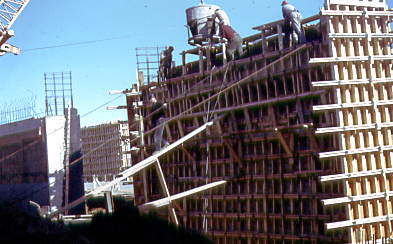By Hannah Klarner
Capital News Service
With big differences in economic policy separating the presidential candidates, one researcher said there’s common ground that could help boost wages, create jobs and close the socioeconomic status gap.
Alice Rivlin, senior fellow at The Brookings Institution, said tackling the nation’s deteriorating infrastructure could be an economic unifier for the nation.
One of the major policy elements, according to Rivlin, a former Federal Reserve Board vice chairman and former director of the White House Office of Management and Budget, would be a large-scale investment in national infrastructure, which Democrats Hillary Clinton and Bernie Sanders both included in their economic platforms. GOP nominee Donald Trump, too, considers infrastructure investment a priority.
Infrastructure spending helps economy grow
“I think there’s a pretty wide agreement that our infrastructure, especially roads, bridges and water systems, for example, are deteriorating.” Rivlin said. “There’s a lot of evidence of that. There’s also evidence that modernizing infrastructure would help the economy grow faster. In the long run, it improves the productivity of the workforce. In the short run, it creates jobs.”
Infrastructure development and improvement have historically been a bipartisan effort, agreed upon by both liberals and conservatives, she said.
“It was a good thing to be seen as in favor of improving the roads whether you were a Republican or a Democrat… In recent times though, the parties have been so deadlocked that they haven’t been able to pass a substantial infrastructure bill, or even solve the problem of the Highway Trust Fund,” Rivlin said.
The Highway Trust Fund is funded by the federal gas tax of 18.4 cents per gallon, which has not been increased in more than two decades. The fund pays for road and other mass transportation projects.
The fund has been running on a deficit, with financial issues beginning in 2014. There have been several short-term legislative solutions to patch the problem, but it’s predicted to run out of money this summer.
Among the attempts to fix the financing are various proposals to allow multinational corporations to bring back their profits from overseas at lower tax rates.
The candidates agree
Clinton, Trump and Sanders have all included large-scale infrastructure investment in their economic reform platforms. According to Sanders’ website, he would invest $1 trillion over a five-year period to create roughly 13 million jobs. Clinton also discusses her plan for infrastructure on her website, though without the hard details in Sanders’ plan.
Trump addressed infrastructure as a job creation platform during his acceptance speech.
“We will build the roads, highways, bridges, tunnels, airports, and the railways of tomorrow. This, in turn, will create millions more jobs,” Trump said.
While he hasn’t listed specifics about the projects, Trump told New York Magazine in an interview of a “trillion dollar plan” that would generate 13 million jobs, much like Sanders’ plan.
Clinton’s website describes a $275 billion investment, less than a third of the trillion-dollar plan Trump and Sanders tout.
“We will work with both parties to pass the biggest investment in new, good-paying jobs since World War II,” Clinton said in her acceptance speech. “Jobs in manufacturing, clean energy, technology and innovation, small business and infrastructure. If we invest in infrastructure now, we’ll not only create jobs today, but lay the foundation for the jobs of the future.”
Rivlin connected infrastructure development and another hot-topic this election season – immigration — though in a different manner than Trump, who has vowed to sharply curb the flow of foreigners into the U.S.
“Infrastructure is clearly pro-growth and does create jobs,” she said. “There’s great controversy about immigration. I think that immigration is also pro-growth and adds to the labor force. And one of our problems is that we have an aging labor force and immigrants tend to be young … and hard working and quite productive. So I disagree with Trump on limiting immigration.”





I wonder where all of the money that was budgeted for infrastructure spending at the county, state, and federal levels went ? /sarc
Hiliary is spending an arm and a leg because it’s what Democrats do.
Trump is spending both arms and legs because he is running the country as he runs his businesses:
Tricks people to buy into his scheme, wholly goes overboard with budgets while pocketing/benefiting for all that spending. Declare bankruptcy when everything spirals out of control. Walk away with winfall.